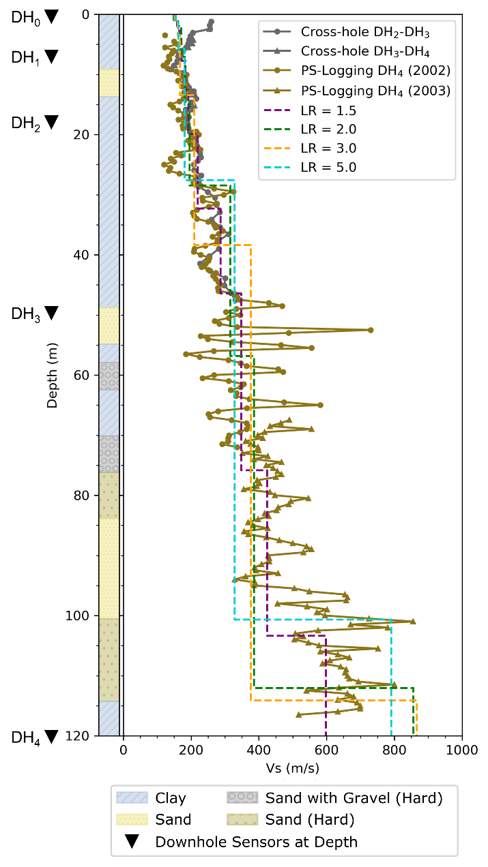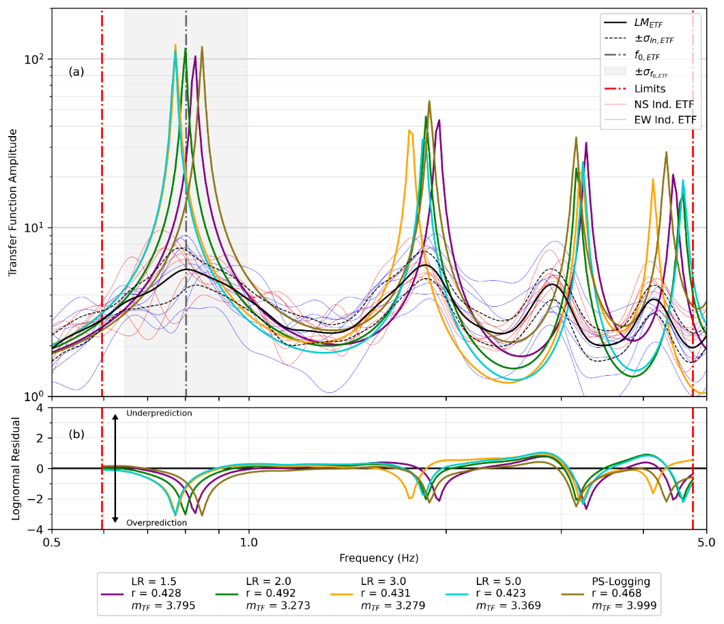Research Project
Calibrating Ground Response Analyses Beneath an Instrumented Bridge using the I-15 Downhole Array and Ground Motions from the 2020 M5.7 Magna Earthquake
PI: Cox

The I-15 Downhole Array (I15DA) is located near the intersection of I-15 and I-80 in Salt Lake City, Utah. This downhole array is installed in soft soil deposited by Lake Bonneville, where depth to bedrock is expected to be at a considerable depth. The soil conditions at the I15DA are representative of other sites in deep, sediment-filled valleys throughout the state (e.g., the Utah, Salt Lake, and Cache valleys), and understanding the seismic response at the downhole array is crucial to determine how to conduct numerical ground response analyses at other locations across the state. The I15DA recorded a number of aftershocks following the 2020 M5.7 Magna Earthquake, and these ground motion records have been used to infer the accuracy of numerical 1D and 2D ground response analyses. We investigate the importance of accounting for spatial variability in shear wave velocity (Vs) during site response modeling using Vs obtained from invasive methods, non-invasive methods (i.e., surface wave inversion-derived Vs profiles), and a pseudo-3D Vs model developed using the H/V geostatistical approach.

Machine-learning based approaches to estimate seismic loss at building inventory level
PI: Esteghamati
Structural designers do not commonly use seismic loss assessments due to their complexity computational expense, and time-intensiveness. This project introduces a neural network-based platform developed for accurate and fast prediction of seismic performance of buildings to support a risk-informed structural design. This neural network uses predictors available during design, such as building geometry, lateral-resisting systems characteristics, and construction material properties, to estimate performance metrics such as expected annual loss.


